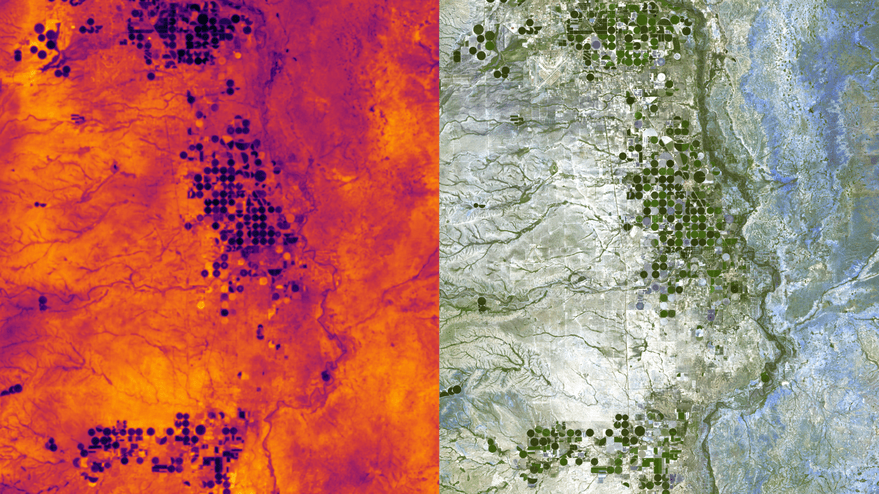SAN FRANCISCO – Washington-based startup Hydrosat is preparing to send its first thermal-infrared instrument into orbit July 8 on SpaceX’s Transporter-11 rideshare flight.
The instrument, designed to measure water stress in agriculture, will fly on Loft Orbital’s YAM-6 mission.
“Our mission, as a company, is to help the globe produce more food with less water,” Hydrosat CEO Pieter Fossel told SpaceNews. “This data will feed into our existing software platform and help us reach more customers in more parts of the world and deliver more value to those customers.”
Hydrosat is focused on building a constellation to acquire global, daily, field-scale, thermal-infrared data, which Fossel sees as a gap in the existing market.
“Until now, the land-surface-temperature data commercial industry, government researchers and government agencies have been working with have come from a handful of government programs,” Fossel said.
National programs tend to offer frequently updated lower-resolution imagery from spacecraft in geostationary orbit or less frequent moderate-resolution imagery from low-Earth orbit. The NASA-U.S. Geological Survey Landsat mission, for example, has provided medium-resolution global imagery biweekly for decades.
“This launch is the first deployment in our commercial answer to that higher-resolution, high-frequency data gap in thermal infrared,” Fossel said.
For its second mission, Hydrosat plans to send a multispectral and thermal infrared imaging instrument into orbit early next year on a Muon Space Constellation-as-a-Service spacecraft.
IrriWatch
Data from Hydrosat’s VanZyl-1 mission will feed into the company’s IrriWatch platform.
IrriWatch serves customers in 38 countries, combining the firm’s proprietary data with free NASA and European Space Agency observations.
“We’re able to deliver valuable water management and climate insights to customers around the world that might not be the typical satellite data customers,” Fossel said. “In order to have the biggest impact and unlock the most value, we need to have a product that can deliver as much value in Guatemala and in India and other places that we do business. It’s not just for a handful of concentrated users in one or two countries.”
While Hydrosat is focused on agriculture and climate change, customers may have additional applications for the data. For instance, Hydrosat is preparing to share thermal imagery with the National Reconnaissance Office.
Ahead of the launch, Hyrosat is help customers get ready to ingest VanZyl-1 data.
After launch, the Rochester Institute of Technology will assist the company in data calibration from the new sensor.
Hydrosat’s VanZyl-1 is named for company co-founder Jakob van Zyl, who died in 2019.
